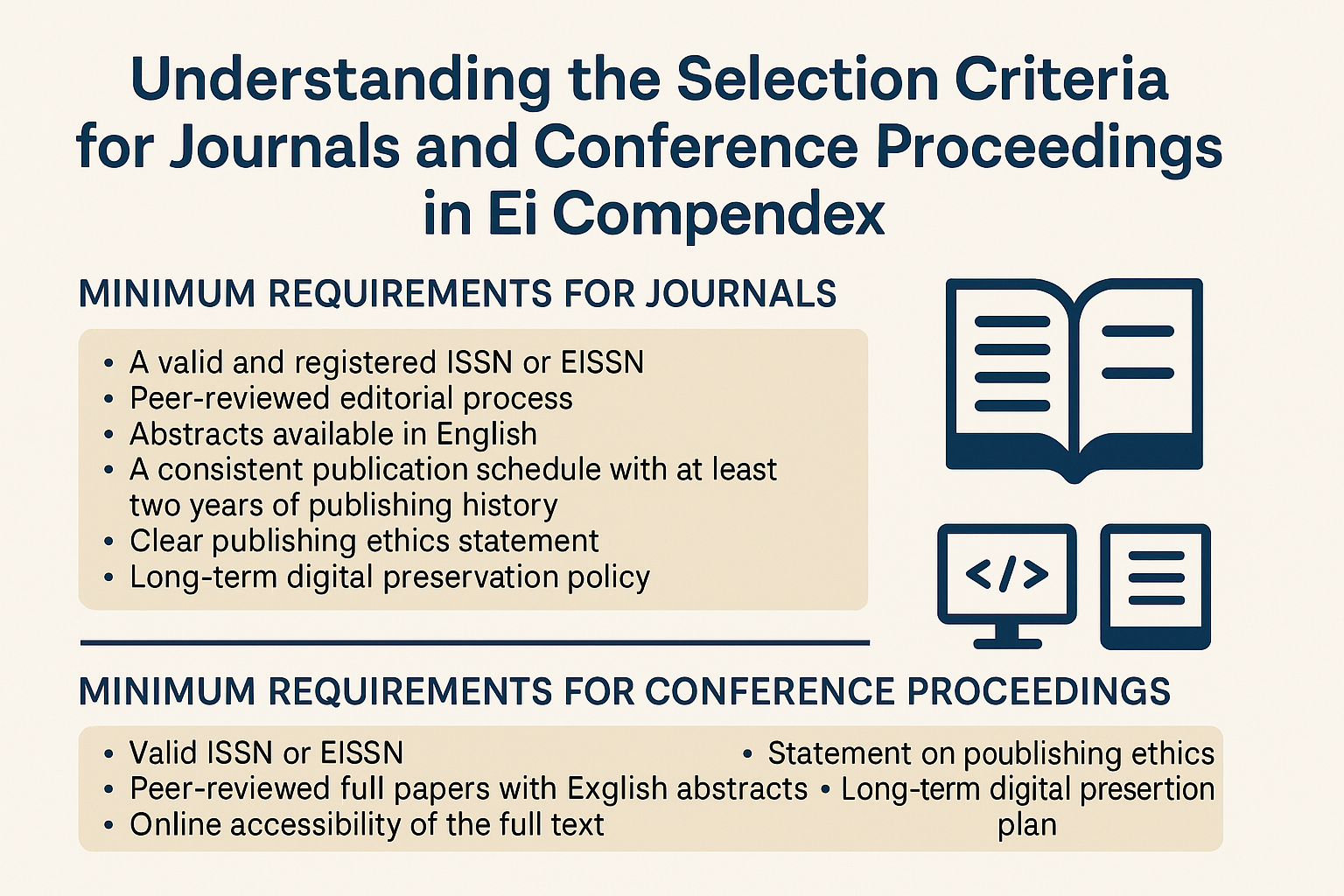For researchers and institutions aiming to publish in high-impact platforms, understanding the evaluation process of Ei Compendex is essential. This globally recognized indexing service applies a strict set of standards when selecting journals and conference proceedings to ensure academic rigor and relevance. Below is a detailed breakdown of the selection criteria used by Ei Compendex for both journals and conference proceedings.

Ei Compendex initially filters journals using a set of basic qualifications. A journal must meet all of the following minimum standards:
A valid and registered ISSN or EISSN
Peer-reviewed editorial process
Abstracts available in English
A consistent publication schedule with at least two years of publishing history
Clear publishing ethics statement
Long-term digital preservation policy
Only journals meeting these minimum requirements will proceed to the next round of evaluation.
After passing the initial screening, journals are assessed based on 18 qualitative and quantitative metrics across five main categories:
Clearly defined editorial scope and peer-review model
Diverse editorial board in terms of discipline and geography
Global authorship representation
Academic contribution to the field
Alignment with the journal’s stated aims and scope
Clarity of abstracts and readability of papers
Use of standard Roman fonts for consistency
Citation analysis including self-citation rates
Domestic ranking references, such as ISTIC for local journals
Consistent publishing schedule with no delays or interruptions
Predictable article volume and frequency
Content must be accessible online
Clear digitization and preservation strategies
Functional English-language journal homepage
DOI (Digital Object Identifier) for each article
Similarly, Ei Compendex sets fundamental benchmarks for conference proceedings:
Valid ISSN or EISSN
Peer-reviewed full papers with English abstracts
Online accessibility of the full text
Statement on publishing ethics
Long-term digital preservation plan
Only proceedings that meet these initial standards are further evaluated.
Conference proceedings undergo a similar 18-point evaluation across the following categories:
Focused and well-defined aims and scope
Transparent peer-review process
Diverse and internationally represented organizing and technical committees
Global authorship coverage
Publicly disclosed collaborators and sponsors
Clear submission guidelines for authors
Transparent fee structure
High-quality scientific writing and relevance to the field
Readability and original contributions
Consistency with the conference scope
Proper formatting, including Roman font references
Recognized academic status of organizing committees
Inclusion in authoritative conference listings
English-language conference homepage
Homepage usability and professionalism
Use of DOIs for digital traceability
The selection process for Ei Compendex indexing is meticulous and comprehensive. Authors, conference organizers, and institutions should ensure they align with both the basic requirements and the detailed evaluation metrics to improve their chances of being indexed.
For more insights into academic publishing standards and discovering top-tier conferences worldwide, visit iconf.org, your trusted source for curated, high-quality academic events.